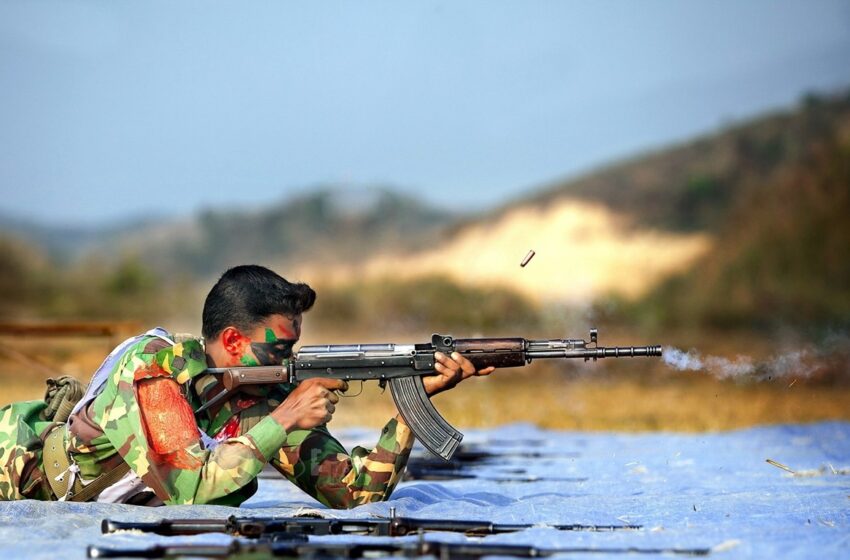Classified military document admits excesses on slain indigenous leader Nabayan Chakma

In the third week of March 2022, protests erupted in the Chattagram hill tracts region in Bangladesh after a key leader of the indigenous group United People’s Democratic Front (UPDF), Nabayan Chakma, died in the custody of the Bangladesh Army after being picked up by a patrol team on March 15. A press release quickly reached the local media outlets claiming that he died of “heart attack”. On March 30, when Human Rights Watch released a report on its website blaming the soldiers for beating him to death, the Home Minister was swift to deny the allegation.
However, a report prepared by the Army Security Unit (ASU) of the Bangladesh Army has admitted that the members of the force tortured the indigenous leader in their custody which led to his death, a narrative that contrasts the government’s repeated denial, this report can prove.
What the document reads
The classified document with the title Supplement Ka, ASU Letter number 23.01.901.719.06.041.01.04.22, was prepared in April 2022. On page Ka-12, the incident that led to the death of Nabayan Chakma was reported in brief.
Under the title: The Arrest of the Company Commander of UPDF (Main) Force – 32 E Bengal (Dighinala Zone), the report reads: ‘On 15 March 2022, at 0430, in the Bashdhala of Dighinala Upazila area (3 km North-East from the Babuchara Army Camp), a 1xA type military patrol team of 32 E Bengal Zonal Headquarters lead by BA-8662 Major Mirza Mehdi Aslam Beg, arrested UPDF (Main) Force’s Company Commander Milon Chakma alias Sourav (Age: 50, Father: Ananda Mohan Karbari, Village: Chandra Mohan Karbaripara, Post+Police Station: Dighinala, District: Khagrachari) along with 1 pistol, 4 ammo., 1 laptop, 1 printer, 1 key-board, 12 cell phones, 8 SIM card, 3 walkie-talkies, 3 machetes and a cash of 31,000 taka.’
Hence, it has been confirmed that the accused Milon Chakma, whose name in the government’s National ID is Nabayan Chakma, was picked up by a patrol team led by a Major of the 32 East Bengal Regiment.
The report adds: ‘After that, he was taken to the Zonal Headquarters in Dighinala Zone and due to the physical injuries inflicted on him during the interrogation, when the UPDF (Main) Force’s Company Commander fell sick, he was sent to Dighinala Health Complex at 0830. Later, during the treatment, at 0855, the doctor declared him dead.’
This part of the report has an uncanny resemblance to what Human Rights Watch published on March 30, 2022. The HRW, based on the accounts of a witness whose name was withheld for security reasons, wrote: ‘[T]he soldiers had tied up Milon’s arms and legs and were beating him with sticks and guns: “They were kicking him like a football with their boots, beating him up with sticks. His arms and legs were broken; he was half-dead.”’
This is to note that, after the report of Human Rights Watch was published, the Home Minister of Bangladesh, Asaduzzaman Khan local tribal groups for the death and told the reporters that the “violence in the Chattagram Hill Tracts is the result of conflicts between tribal groups” and stressed that the security forces were not involved in it. Which is untrue according to the leaked classified document of ASU.
The recommendation
The sparking of a wave of protests following the death of Nabayan Chakma, aka Milon, that resulted in vandalising of vehicles and properties made the ASU assess the situation. Hence, the document not only admitted the active role of military personnel in the torture and death of Nabayan Chakma but also recommended the “Standard Operating Procedure” of such operations should be enforced to prevent the repetition of “untoward incidents”.
On page Ka-15, the report reads: ‘In the future, it would be possible to avoid untoward incidents, if while operating in Chattagram Hill Tracts, the SOP prepared by the 24 Infantry Division is followed accordingly and instead of torturing the indigenous terrorists after their arrest, they are brought to the Zonal Headquarters for further interrogation by a responsible military official.’
The recommendation is a confirmation that the “untoward incident” i.e. death of an indigenous leader in the custody of the Bangladesh Army due to excessive torture, did take place.
Involvement of the military confirmed in other documents
After the HRW report came out, the director of Inter-Services Public Relations (ISPR) claimed to Indonesia-based Benar News that the “force was not aware of the death of Milon Chakma” while a statement sent to the local press from the law enforcement agency, that is police, suggested that the accused indigenous leader fell ill when he was being transported to Dighinala upazila.
However, apart from the ASU report, another classified document that was sent in March 2022, with an identification number 104/10/CI(Ops-1), titled: Incident Report-Regarding the arrest of UPDF (Main) Force’s armed terrorist, confirmed that Milon Chakma was arrested by the military personnel led by Major Mirza Mehdi Aslam Beg.
Thus, both the classified ASU and MI documents prove that the death of Nabayan Chakma, alias Milon Chakma, was the result of torture in the custody of a military unit.
Calls ignored
Human rights groups, including the Special Rapporteur on the Rights of Indigenous Peoples José Francisco Cali Tzay, called for an impartial investigation and information regarding the incident around the death of Nabayan Chakma.
Three UN Special Rapporteurs sent a letter on 10 August 2022 with four particular requests. No response from the government was found in this regard.
On 29 March 2022, the International Chittagong Hill Tracts Commission called for an independent investigation into the incident. The government did not respond to the letter as well.

1 Comment
Hi, this is a comment.
To get started with moderating, editing, and deleting comments, please visit the Comments screen in the dashboard.
Commenter avatars come from Gravatar.